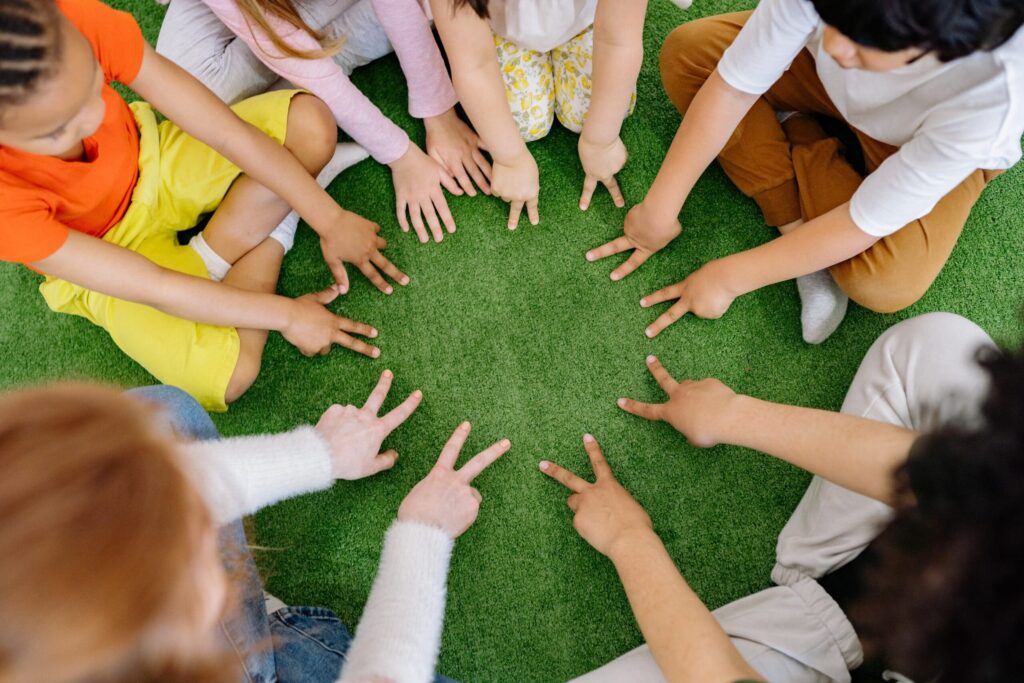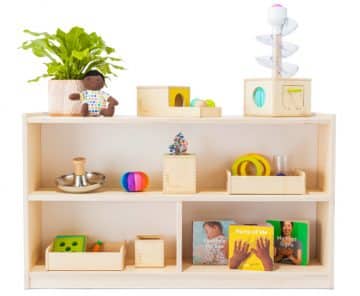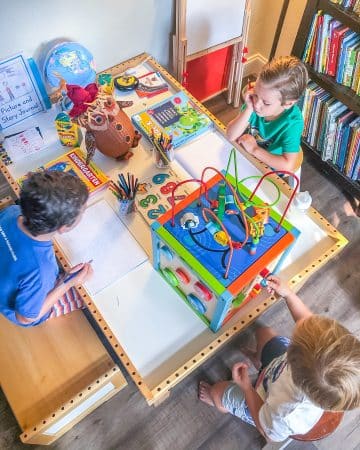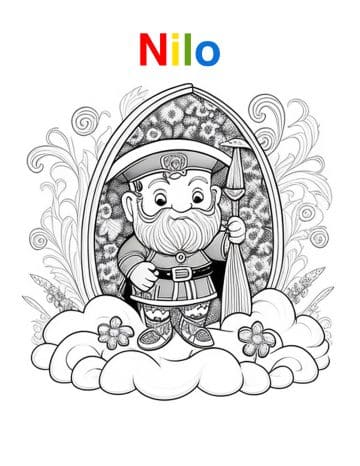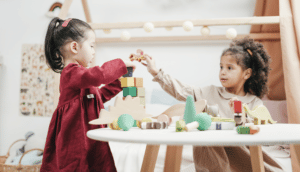
Play is an important part of children’s development and this is especially true for their open ended play to learn activities. As a matter of fact, play is one of the key elements for the cognitive development of infants and toddlers. Playing is fun and children like it when adults spend time playing with them. Playing with children is a good way for an adult to learn about what is happening in their child’s head. You’ll find out the benefits of open ended play as well as numerous activity ideas for kids that promote healthful mental and physical growth by reading below.
What is Open Ended Play?
Open ended play involves free choices for children. Open ended play activities usually involve exploration and physical activity. In these activities, children are allowed to use their imagination and do things that they are curious about. Open ended activities are child-guided and there are no set rules or limitations applied for the activity. Typically, no strings are attached for toy-making or playing and the child enjoys all of the toys because they are free to explore and choose what toys they like. This also helps children to figure out their interests.
Children are encouraged to touch, roll, crawl, use their hands, talk, and play with toys. This is what is known as open ended play. Some toys can be used in open ended play and there are many different types of open ended play toys. Some of these toys include pretend play toys, motorized toys, pretend play toys that make sounds, and many other types of toys. We offer multiple toy options for our play tables that promote healthful play and advantageous learning experiences.
Benefits of Open Ended Play
Cognitive Growth
Cognitive Development & Play
Kids do not realize the importance of cognitive development for their educational success. Most parents are unaware of this process, and some have even said that it takes them years to see results with their children. The reality is that cognitive development occurs throughout a child’s entire life, not just at the beginning of toddlerhood. In other words, there is never a “turn on” age for cognitive development to occur. Play is absolutely essential for the early cognitive development of your toddler, and the resulting benefits for their future development and education are priceless.
There are several key elements involved in cognitive development, and play is among the most important and involves several areas. There are many things that preschoolers do not get enough of in the day to day environment, and play is one of those things. Play is important not only for your preschoolers’ development, but also their ability to reason, learn, identify, imagine, learn new things, learn the alphabet and much more.
Problem Solving Skills
Toddlers are able to solve problems in several different ways, which helps to strengthen cognitive development. The most basic problem-solving skills are actually quite simple: being able to recognize what is wrong, identifying a problem and then working to solve it. Children who are actively engaged in problem solving activities learn to think and act in different ways than those who are passive. They learn to think of new solutions, as opposed to just accepting the old ones. They also learn to creatively apply the knowledge they already have by applying it in new situations. Problem-solving skills are important not only for problem solving, but also in developing self-esteem and helping them to overcome setbacks and disappointments.
Music Theory
Another important area for preschoolers is music, specifically music that teaches them about emotions and the basics of music theory. We all listen to music at some point and some of us learn from it. This is just one of many activity ideas for kids where they can learn. Even if your child does not play an instrument in preschool or play a musical instrument in the home, play the music that is available to them in preschool. They will learn a lot about emotions, melody, rhythm and harmony, all of which will help with cognitive development.
Playing Games
Playing games is another way to help stimulate cognitive development. Games engage problem-solving skills and help children learn to express themselves through games. Some preschoolers do well in structured tests and field trips, so encouraging these activities is crucial.
Having trouble developing problem-solving skills?
If your preschooler is having trouble developing problem-solving skills or doing well in structured tests, you may want to encourage more free playtime, in addition to playtime with other preschoolers or even toys that teach incremental thinking. Some toys are educational games that help develop problem-solving skills and then they are playthings that your child might enjoy playing. Some of the additive play that preschoolers tend to enjoy the most are pretend play toys, board games, memory cards, animals or cars and dolls. All of these things are important in helping your child’s cognitive development.
Physical Growth
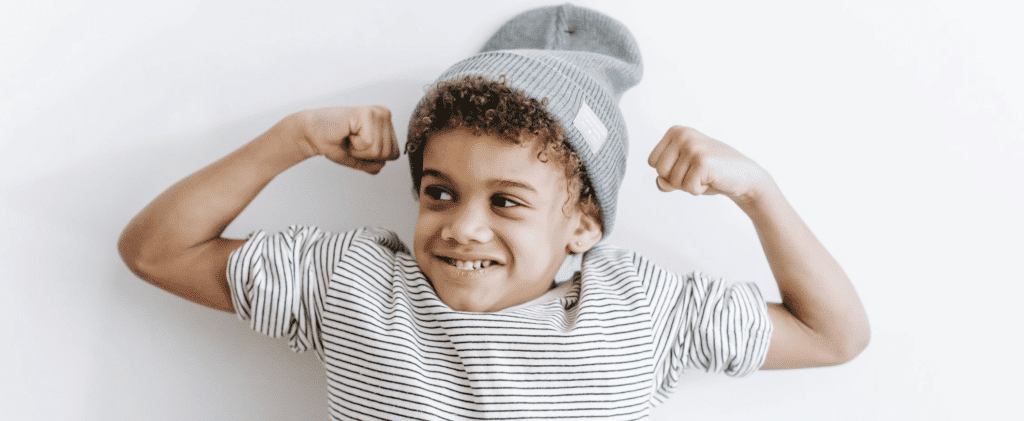
Fine Motor Skills & Gross Motor Skills
Open Ended play promotes physical activities that require children to use both fine and gross motor skills. Typical physical development follows an understandable pattern. It begins with the central nervous system, which includes the brain and all the nerves and organs connected to it. Then it continues through the body, eventually reaching the endpoint in the form of complete body movement. Gross motor development is particularly important during a child’s young life since physical development is also tied to other developmental areas.
Children have to learn how to walk, move their arms and legs, sit, stand, and reach. These are the basics of development. During play, preschoolers develop their fine motor skills. Fine motor skills include eye and hand coordination, such as using the eyes to see objects; grasping with the fingers; pointing and picking up small objects.
Coordination & Balance
Play is one of the most important parts of early years development. It allows the young child to use his muscles in controlled, coordinated sequences. Children also learn about balance and coordination, and they become familiar with the world around them. At this point they will begin to understand why certain things happen in specific ways.
Children have to learn how to walk and sit at the same time. They need to learn to coordinate walking, running and climbing with their large muscle groups. Plus they have to learn to control their large and tiny bodies. They also need to be able to use fine motor skills, such as fine manipulation of objects. Children start to develop their fine motor skills before they can speak, but it is crucial that this process be done correctly and regularly; This promotes proper communication.
Health & Nutrition
The primary goal of early childhood development programs is to promote healthy nutrition. Healthy nutrition includes a balanced diet, multivitamin/mineral supplements, vitamin B12, prenatal vitamins, lean meats, fruits and vegetables, and whole grains. Caregivers should educate themselves about healthy nutrition. They can consult experienced parents, teachers, and others who are knowledgeable about proper nutrition. In addition to promoting healthy nutrition, caregivers and parents should teach children the importance of daily exercise and good hygiene.
After physical development, children grow into adolescence and begin to participate in social interactions. As their brains continue to grow, they also expand their ability to learn and achieve. At this time, they should have some flexibility and be well developed physically and mentally. Parents and other caregivers play an important role in promoting healthy childhood development. Improper caregiving and under-stimulation during infancy and childhood may hinder their development later in life both physically and mentally.
Creative Development

Children also learn about creativity through their open ended play activities. When an infant or toddler plays with sensory products, they are exploring their sense of touch, creativity, imagination, and sound. Most of these toys are designed to make the experience of playing fun and creative.
Some open ended playthings include toys that have moving parts, toys that can be broken into simple pieces, and toys that allow children to use their imagination to solve the puzzle. Painting is also a great way to trigger a toddlers creative side. Having many color options, multiple brush sizes and even colored pencils allows them to bring their imagination to life! This creative activity also promotes hand-eye coordination and fine motor skills in the fingers and hands.
Open Ended Play Activity Ideas for Kids
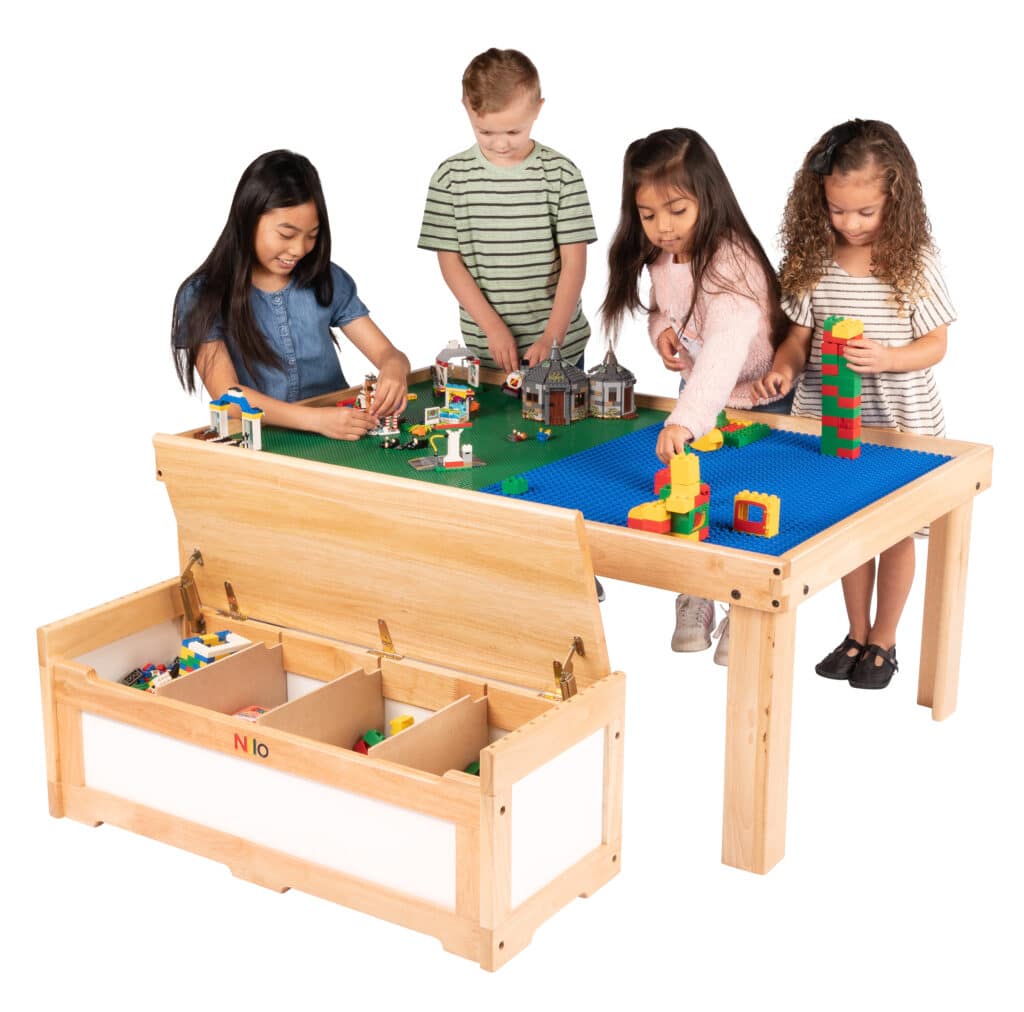
Many parents encourage their children to participate in open ended play. They allow their children to be exposed to a wide variety of activities that allow them to develop many of the skills and traits that they will need as they grow up. It is beneficial for babies, toddlers, preschoolers, and young children to engage in open ended activities. Play tables are a great option for these activities because they serve as a central area for play. You can also rotate toys on activity tables so the fun never stops! We highly recommend you check out our Large and Small Nilo Activity Tables; They’re solid hardwood framing and are proven to last generations. The types of open ended activities range from building blocks, toys, and puzzles to reading books and coloring pictures.
Building with Blocks
One activity idea for kids that is fun for almost any age group is building blocks. Building blocks provide children with the ability to create anything that they can imagine. Some kids like to build for the toy at hand, while other kids want to build for their imagination. When you buy building blocks, they usually comes with small pieces that can be used to put it together. This type of open ended play activity is helpful because children are allowed to use their imagination to solve the puzzle and to design something creative.
Using Magnetic Tiles
Another good open ended play activity idea for kids that all children love is creating something with magnetic tiles. Most people have heard of building blocks but not many people know what a magnetic tile is. A magnetic tile is basically a puzzle; You have to fit the square peg into the open ended part of the tile. You do this by putting the magnetic strip on the front of the tile, and then pressing the square peg into the magnet. It sounds easy and it is. However, to make it more fun you must try to get every peg into the magnet. That can be quite a challenge for children who have a hard time remembering things! This makes magnetic tiles a great mental activity for children.
Other Activities
There are a plethora of other open ended play activity ideas for kids. Some activity ideas are building cars, making puppets, creating art, clay sculpture, puppetry, and many more. One of our favorite open ended activity ideas for kids is building with blocks. Building with blocks allows kids to build whatever they can imagine and this almost never gets old! Kids can spend hours building a house out of blocks, then take them down and create something completely different. It is such an invigorating and satisfying activity for kids. We highly recommend it! These are just a few activity ideas for kids that promote healthful mental and physical development. Nilo also offers accessories that are compatible with Nilo activity tables that are perfect for play to learn activities. View all of our Nilo products by clicking here.
Need a place for your activities? We’ve got the perfect solution!
-
Sale Product on sale
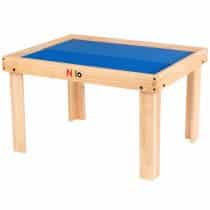 Small Nilo® Toddler Activity Table with Blue Baseplates (With Accessory Holes)
Small Nilo® Toddler Activity Table with Blue Baseplates (With Accessory Holes)$289.00Original price was: $289.00.$249.00Current price is: $249.00.Rated 5.00 out of 5 based on 2 customer ratings -
Sale Product on sale
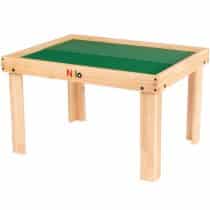 Small Nilo® Toddler Activity Table with Green Baseplates (With Accessory Holes)
Small Nilo® Toddler Activity Table with Green Baseplates (With Accessory Holes)$289.00Original price was: $289.00.$249.00Current price is: $249.00.Rated 5.00 out of 5 based on 3 customer ratings -
Sale Product on sale
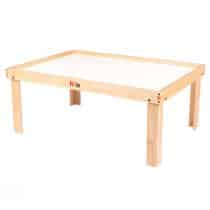 Large Nilo® Multi-Activity Childrens Play Table (With Accessory Holes)
Large Nilo® Multi-Activity Childrens Play Table (With Accessory Holes)$329.00Original price was: $329.00.$289.00Current price is: $289.00.Rated 5.00 out of 5 based on 73 customer ratings -
Sale Product on sale
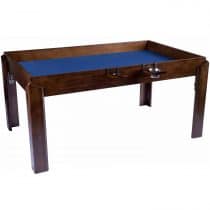 Nilo® Master Table
Nilo® Master Table$1,499.00Original price was: $1,499.00.$1,399.00Current price is: $1,399.00.Rated 4.88 out of 5 based on 8 customer ratings -
Sale Product on sale
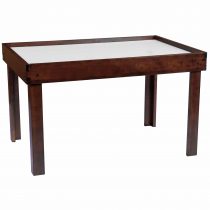 Nilo® Gamer Table
Nilo® Gamer Table$449.00Original price was: $449.00.$399.00Current price is: $399.00.Rated 5.00 out of 5 based on 6 customer ratings -
Sale Product on sale
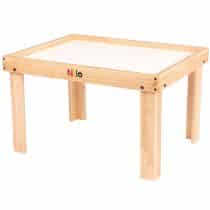 Small Nilo® Toddler Activity Table (With Accessory Holes)
Small Nilo® Toddler Activity Table (With Accessory Holes)$259.00Original price was: $259.00.$219.00Current price is: $219.00.Rated 5.00 out of 5 based on 15 customer ratings -
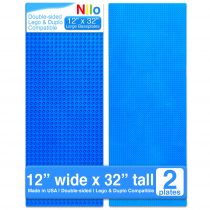 Two Blue Nilo® Baseplates (Compatible with Lego/Duplo®)$59.95Rated 5.00 out of 5 based on 1 customer rating
Two Blue Nilo® Baseplates (Compatible with Lego/Duplo®)$59.95Rated 5.00 out of 5 based on 1 customer rating -
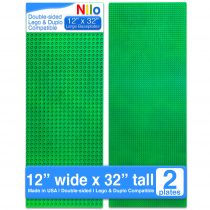 Two Green Nilo® Baseplates (Compatible with Lego/Duplo®)$59.95Rated 5.00 out of 5 based on 14 customer ratings
Two Green Nilo® Baseplates (Compatible with Lego/Duplo®)$59.95Rated 5.00 out of 5 based on 14 customer ratings -
Sale Product on sale
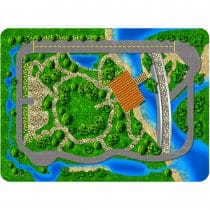 Nilo® Play Mat (Fits Large Play Table)
Nilo® Play Mat (Fits Large Play Table)$34.95Original price was: $34.95.$29.95Current price is: $29.95.Rated 5.00 out of 5 based on 3 customer ratings


